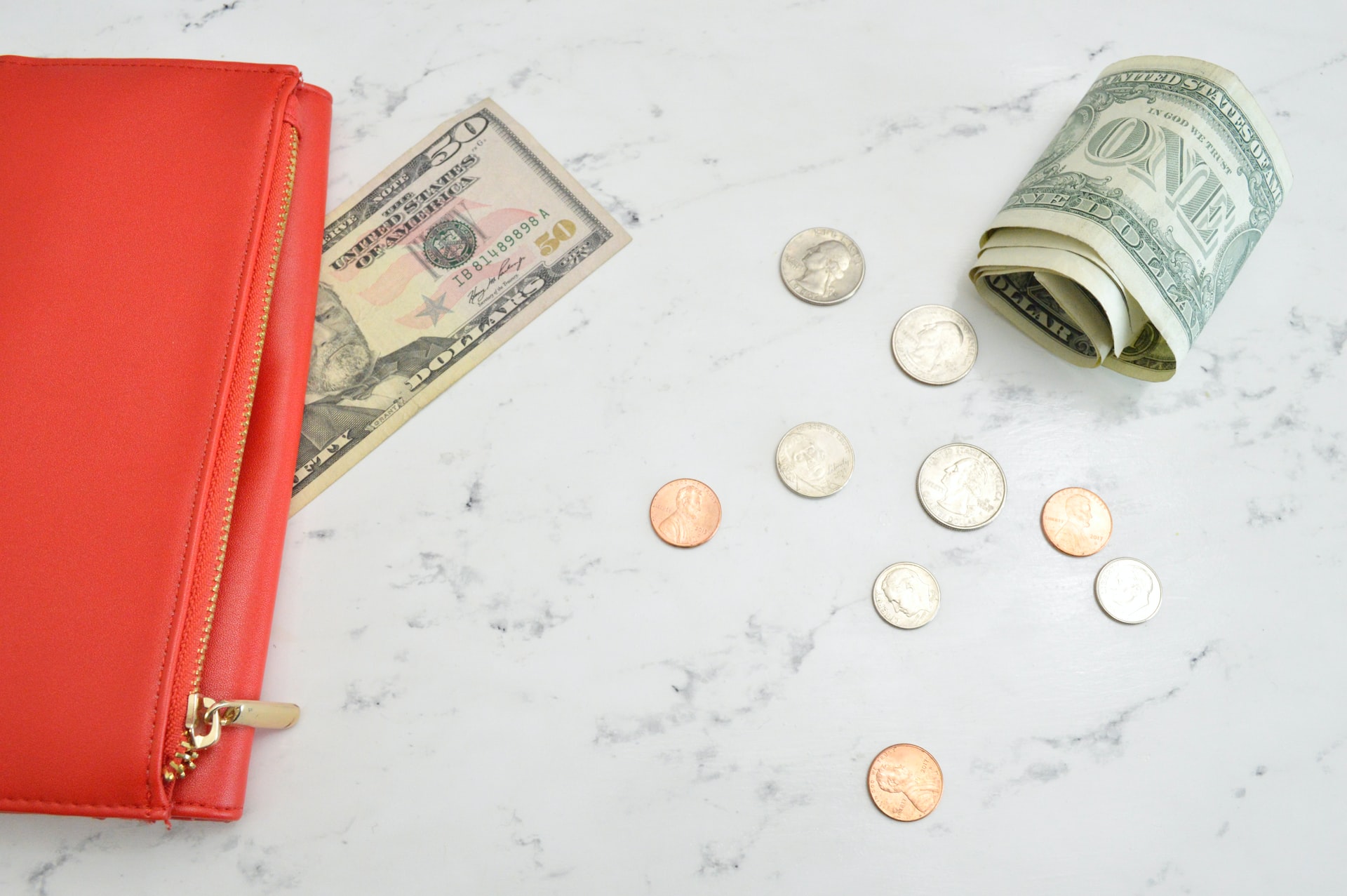Qualifying for a personal loan when you have bad credit or a lack of credit entirely can seem like an impossible task. The truth is that there aren’t many loan options for those with a bad credit history looking to secure a personal loan, but in this article, we will discuss those options.
What Exactly is a Bad Credit Loan?
Typically, when a lending institution receives an application for a personal loan, there is heavy consideration placed upon that borrower’s credit score to determine the financial risk that they pose by borrowing this money from them. That lender looks to your credit report to inform them of your creditworthiness, or the likelihood that you will pay back the loan in full and on time. Usually, eligibility for a personal loan requires a minimum credit score. This can make it hard for those with poor credit to qualify for these loans.
However, some lenders offer personal loans specifically for borrowers with poor credit. These types of loans, unfortunately, do almost always come with fixed higher-interest rates and other terms that aren’t as favorable. These loans, generally called “bad credit loans”, are a good stepping stone to help you build up or repair your credit. By paying on this loan in a timely manner, you may eventually be able to qualify for better loan terms with lower interest rates, as well as other financial opportunities.
Why It’s Important to Understand Your Credit Score
A credit score is typically considered to be “bad”, “low”, or “poor” if most scoring models place it somewhere between 300 and 579. This may have come about because of insufficient time or chance to build your credit up, finding yourself a victim of identity theft or other scam, or it could simply be from financial mishaps such as missing payments of a debt-to-income ratio that is too high.
Regardless of the reasoning, lending institutions typically look to your credit score as a representation of how likely you are to repay them. If your creditworthiness is found lacking as a potential borrower, you will almost certainly have to pay a higher APR rate (Annual Percentage Rate) than someone who has better credit.
How to Track Down a Bad Credit Loan
While it may not be ideal, it is possible to qualify for a personal loan with low credit (or no credit for that matter). Taking the time to repair your credit is always worthwhile, as lower interest rates would save you a lot of money in the long run. However, if you find yourself in a situation where you truly need a personal loan, keep the following tips in mind to make sure that you find the best bad credit loan possible.
Know Your Credit Score
Be familiar with where you stand by checking your credit score at least once a month. At the very least, this can help you avoid applying with lenders whose minimum score you do not yet meet, saving time for both you and them. You are also entitled to one free copy of your credit report every year from the three major credit bureaus. This allows you to make sure that the information contained in those reports is correct and gives you the chance to dispute any errors you may find there.
Research Potential Lenders
As mentioned before, there are lending institutions that look deeper than your credit score when assessing your creditworthiness. Do your homework to find a lender who doesn’t solely depend on your FICO score, where it might be easier to qualify for a personal loan. Depending on the particulars of your financial situation, your employment, your level of education, or your income could be enough to convince these lenders to offer you such a loan.
Try Prequalifying First
Before you apply with a lender, you should try prequalification through their online portal first. By doing so, you can determine whether or not you are likely to be approved and the rates that you will likely be eligible for when you acquire that personal loan. This is the best way to see what loans you might qualify for and to calculate how much you will end up paying overall. This process is considered to be a soft inquiry against your credit, which will not harm your score.
Compare Offers
Once you have researched and gone through the prequalification process with a few different lending institutions, you should review your options. Look over the personal loan offers you have received and familiarize yourself with their available terms, interest rates, and lender fee structures. Review your options and find the one that works best for you and your current financial situation.
Submit Your Application
You should only consider submitting a formal application once you have narrowed down your options. Each application you fill out will generate a hard inquiry against your credit, which will temporarily impact your score in a negative way. It will likely take several business days for the lender to process your loan application. If they deny your application, they will usually inform you of which factors contributed to their decision. As disappointing as that may be if denial is their decision, you now know what areas you should improve.
Where Can You Find a Bad Credit Loan?
There are a few types of lending institutions that offer personal loans for those with poor credit. Be sure to compare the eligibility requirements, interest rates, loan amounts, and the terms presented before making your decision. Here are some of the different types of lenders to begin your search with:
Banks
There are some banks that offer personal loans. Although completing the application process online may be more convenient, it may work in your favor to visit in person when seeking a loan. In fact, some banks may even require that you fill out the forms in person at a local branch.
Credit Unions
Many of these lending institutions require you to be a member of the credit union in order to qualify for a personal loan. Some do not require you to be a member in order to apply, you might have to become one as a part of the process of finalizing that loan.
Online Lenders
With an online lender, you will remotely fill out an application and will be asked to submit digital documentation that will verify your address, identity, and income.
Loans Available for Those With Bad Credit
Taking out a traditional, unsecured loan isn’t your only option if you have a lack of or poor credit. What follows are some of the types of personal loans that you might qualify for despite finding yourself in such a situation.
Bad Credit Home Equity Loans
Even with poor credit, you might be able to utilize any equity that you have built into your home over the years. Home equity loans come with a fixed rate and usually come with a repayment term measuring between 5 to 30 years. Just like with a personal loan, this type of loan pays you the total amount upfront. If you have equity in your home and need a large amount of cash quickly, you can use a home equity loan to borrow up to 80% of the value of your home. Just be very aware that, by using your home as collateral, you could lose your home if you default on this loan.
Bank Agreements
If you have a good history with your bank, you may be able to get financial assistance using this favorable relationship. While it is important to note that not all banks offer them, you might be able to qualify for what is known as a “bank agreement”. These short-term solutions could either be a small loan or might even allow you to overdraft on your existing bank account up to a specified amount.
Cash Advances
These small, short-term loans offered by credit card companies could be a solution if you need money quickly, such as finding yourself in a financial emergency. When you apply for a cash advance from your credit card lender, you are able to withdraw cash from your total balance. While you can avoid the credit check often associated with applying for a loan, you will most likely have to pay a fee. These advances also almost always come with a much higher interest rate than what is applied to your normal purchases on that same credit card.
HELOC Loans
HELOC (Home Equity Line of Credit) loan is a bit like a credit card in that you can borrow as little or as much as you may need against your home’s equity. While there is an established limit associated with this type of loan, you can reuse this line of credit over a period of time if you have the need. Unlike home equity loans, HELOCs usually have variable interest rates, so you might end up paying higher monthly payments than with other options. However, this may be a good option for you if you aren’t sure how much money you may need.
Joint Personal Loans
If a poor credit score is preventing you from qualifying for a personal loan, you might consider asking for the help of a close friend or family member. You could potentially get them to agree to a short-term loan directly from them; one of the upsides of which is that they likely would not ask you for a credit report. However, if this loved one has a high credit score, you might instead ask them to be a co-signer on a joint personal loan, which allows you to apply for a loan with a second person. A co-signer with good enough credit will help lower to risk posed to the loan lender, which may help assure them to lend the money to you. However, be aware that if you default on your payments, the lending institution will attempt to collect from both of you, which may impact both you and your co-signer’s credit scores.
Payday Loans
While this type of loan doesn’t require a credit check and you get the money immediately, it is best to avoid payday loans if at all possible. These notoriously predatory loans charge astronomically high fees and interest rates, sometimes as much as 400%. Usually limited to less than $500, with a repayment window of 2 to 4 weeks, this dubious type of loan leads many borrowers into a cycle of debt that can be hard to get clear of.
Secured Loans
With this type of loan, you offer the lending institution an asset you own as collateral against the cash you are borrowing. This might be a car, your home, or even a savings account. Even for those with low credit scores, these loans are usually easier to qualify for and they typically come with better interest rates. This is because the risk to the lender is lowered, as valuable collateral is promised to them as compensation if you should default on your payments. You should understand that if the confiscated collateral isn’t enough to recoup the cost of the loan, you will likely still be responsible for the difference.
Student Loans
If you are going to start attending college soon (or are already in school) and have bad credit, you might be eligible for a student loan to help cover your expenses. Although a lot of lending institutions will not allow personal loans to be applied toward financing your education, there are some lenders who will. Some of them may even offer to cover the entire cost of your tuition. You should read the specific language of any student loan carefully, however, as many of these lenders have vague or strict restrictions to their deferment and forbearance programs (if they have them at all).
Unsecured Loans
For borrowers with bad credit, qualifying for an unsecured loan can be extremely difficult. These kinds of loans rely heavily on a borrower’s creditworthiness for approval, closely considering factors like credit history, debt obligations, and income. Because an unsecured loan does not require collateral, if you default on your payments, the lender cannot seize your assets. However, defaulting on this type of loan will deal a major blow to your credit score.
Comparing Personal Loan Offers
After researching and prequalifying for the personal loans available to you, it’s time to review your options to find the one that is best for you. Here are a few tips for how to compare and determine which offer is the right one for your situation.
Account for Any Possible Fees
The lender may have any number of fees associated with your personal loan that you would be expected to pay in addition to your annual interest rate. These might include administrative costs, late payment charges, or even a fine for paying off the loan before its end of term (some as high as 8% of the total amount of the loan). While most lenders do not charge a prepayment penalty, it is best to familiarize yourself with any potential fees you might be faced with during the life of the loan.
Compare APRs
The APR (annual percentage rate) is how much your lender changes you for the loan and is not the same thing as the loan’s interest rate. Though the APR includes the interest rate that you will be paying on, this includes additional fees and gives you a better understanding of just how much your loan will cost you in the end. Simply stated, the lower the APR, the lower the overall cost of the loan.
Research Lender Reviews
Like most services today, even lending institutions have online reviews for your perusal. As part of your initial research into various lenders and what personal loans they offer, read as many of these reviews as you can. This will give you a much better understanding of what kind of institution you may be dealing with and potential pitfalls or benefits that you might not otherwise be aware of.
Understand Repayment Terms
The repayment terms of your loan can make a massive difference in the size of your monthly payments. Typically, unsecured personal loans from most lenders come with a 12 to 60-month repayment term, though there are loans with longer repayment plans available. A longer repayment term means smaller monthly payments, but a higher APR rate and more money paid in interest over the total life of that loan. A shorter repayment term means larger monthly payments with lower APR rates. Some lenders offer only two or three different repayment terms, but there are institutions that offer more flexible terms as options.
Spotting Bad Credit Loan Scams
Sadly, not all lenders are legitimate – there are those out there who are looking for those who might be in financial desperation. Scammers are hoping that this desperation might mean that potential borrowers might not look too closely at the fine print in the contracts that they are signing. Even though you may need funds quickly, never assume that a lender is legitimate without first doing your homework. Here are a few things that should raise a red flag if you should come across them.
Call for Immediate Action
If you find a lender cornering you to act immediately or make decisions within a short time period, something is likely amiss. A proper lending institution isn’t going to pressure you and knows that you need time to consider the decision of accepting the offer of a loan.
Doesn’t Need Your Payment History
Any legitimate lending institution will first want to check your payment history before approving you for a loan. In addition, they should also want to see your debt-to-income (DTI) ratio, your credit, and other financial information. If a lender guarantees your approval for a loan without checking these things first, you should rethink doing business with them.
Lack of Physical Address
A lender should have their company’s physical address listed on its website. If there is a lack of an address, only a post office box, or you cannot confirm the listed address using Google Maps (or something similar), that’s a big red flag.
No State Registration
Regardless of whether the lender is online or in person, they must be registered with your state in order to conduct business there. This is by law and is enforced by the Federal Trade Commission (FTC). Institutions should list which states they are registered with. If you discover a lender that is not registered with your state, you should consider contacting your state attorney general’s office to check the company with them.
They Contacted You
A credible lending company will not initiate contact with you to ask for your personal information. If you did not contact them first, you should consider not answering any type of communication from that lender, as it could be a scam to coax financial information out of you.
Unsecured Website
If the lender you are looking into doesn’t have a secure website, you should refrain from entering any information with them. Many scammers try to steal people’s information with this tactic by catching internet users unaware. When you are researching lenders, make certain that the website’s URL says “https” and not simply “http”. Also, make sure that any page that asks for your financial information also shows a padlock icon.
Upfront Fees
A viable lender isn’t going to require you to pay anything before you have been approved for your loan. Many trustworthy lending institutions may ask for an application fee or a credit report fee, these are almost universally taken out of the loan itself.
If You Think You Have Been Scammed
If you discover that you are the victim of a financial scam, you should immediately contact law enforcement and file a police report with them. There might not be anything that they can do to help, you having the crime documented as much as possible could be instrumental in the future.
After you have reported the crime, you need to likewise report the scam to the FTC Internet Crime Complaint Center. By doing so, you may help prevent similar scams from impacting others like you.












